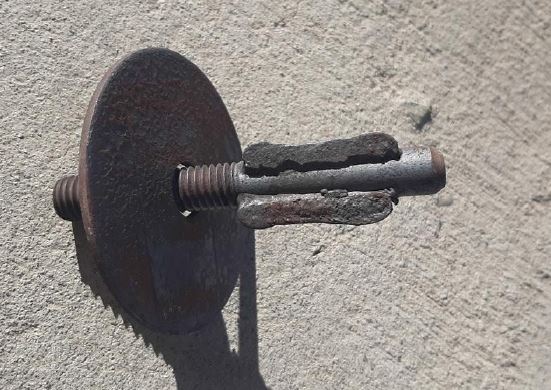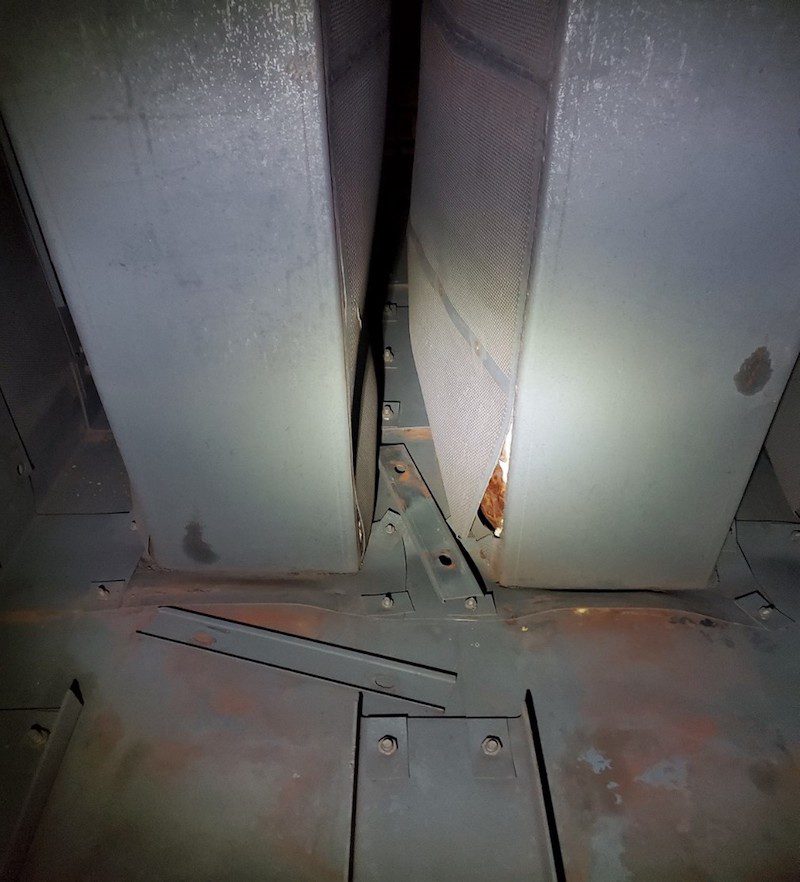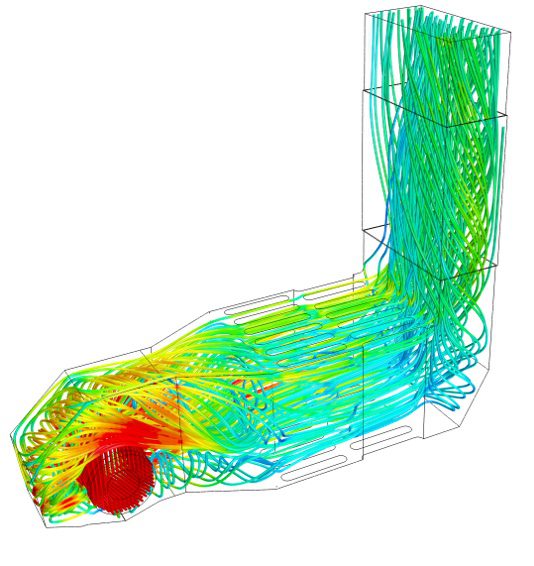
Written by Scott Schreeg | Technical
Looking for options to upgrade your legacy combustion turbine exhaust system? Legacy/OEM exhaust systems could have inherent design issues that can be resolved by upgrading with present day methods and materials.
The designs for some OEM gas turbine exhaust systems may have been based on best available technology at the time, but as new methods and materials have evolved over the years, there may be better options to ensure your turbine exhaust system is as efficient and safe as it can be.
Some common problems with legacy exhaust systems include:
Internal floating liner system failures
One common issue with legacy exhaust systems specific to the internal floating liner systems is the use of a scallop bar and threaded stud. The scallop bar (or plate) was used in areas of the exhaust high turbulence and better durability was needed. It was welded to the casing and provided more rigidity than a single liner stud connection while still trying to minimize the transfer of heat to the carbon steel casing. However these weldments were notorious for having the weld for the threaded stud to the scallop plate fail. This failure is repairable but given it is a wide spread issue, typically plant maintenance schedules find it difficult to stay ahead of the problem and end up having complete sections of liners fail.
Another common liner failure is in the vertical stack liner systems that are lapped with weather instead of flow. As legacy CT (simple cycle) exhaust systems were being installed many years ago they were primarily used as peakers. Therefore the stack liner was lapped to keep rain water out of the insulation but it was not the best approach for durability with the turbine in operation. With the advancements in insulation to resist moisture and given a lot of units now have much higher capacity factors, it is reasonable to consider relining the stack lapping with flow for maximum durability.
Silencer design
OEM exhaust systems may have included silencer designs that did not provide for optimal aerodynamics or structural design.
Existing horizontal exhaust duct silencer systems have had issues with the silencers not being properly supported and caving into the floor. The structural design for the silencer floor support system in the floating liner fails due to lack steel to support the loads from the silencers. This can quickly lead to catastrophic failure of the silencer system as this shift in the silencers results in them coming out of their upper guide brackets causing safety and performance issues.

Another common design practice was to use perforated walls in the silencer duct. Using perforated walls can be an effective way to maximize attenuation in a restricted amount of space. However, if there is enough cross section area and length available, for durability purposes it is preferred to use solid liners (like in the rest of the exhaust system) and handle the needed acoustical performance solely with the parallel baffle or like ‘half gap’ silencer design.
Improved aerodynamics (optimize pressure drop and velocities for improved durability)
If a new exhaust system is being considered or just an upgraded liner system, it may be time to consider other aerodynamic improvements that help reduce pressure drop providing more output and also optimize velocities for a more durable system.
Through CFD (computation fluid dynamics) analysis of old exhaust system failures, these older systems may have been designed more to meet commercial goals and less to provide a safe durable CT exhaust system. Through many root cause analysis projects on various legacy systems there are many areas of opportunity to improve the exhaust flow aerodynamics including:

- Avoiding re-circulation in inlet/transition ducts
- Using improved geometries to transition flow from horizontal to vertical (ie stack back walls)
- Locating the silencer inlet to allow for better flow development improving durability
If you are looking to repair a failing exhaust system including turbine exhaust expansion joint, diffuser, plenum, transition duct, silencers or stack let SVI Dynamics review upgrade options that can help improve exhaust system durability and efficiency.
